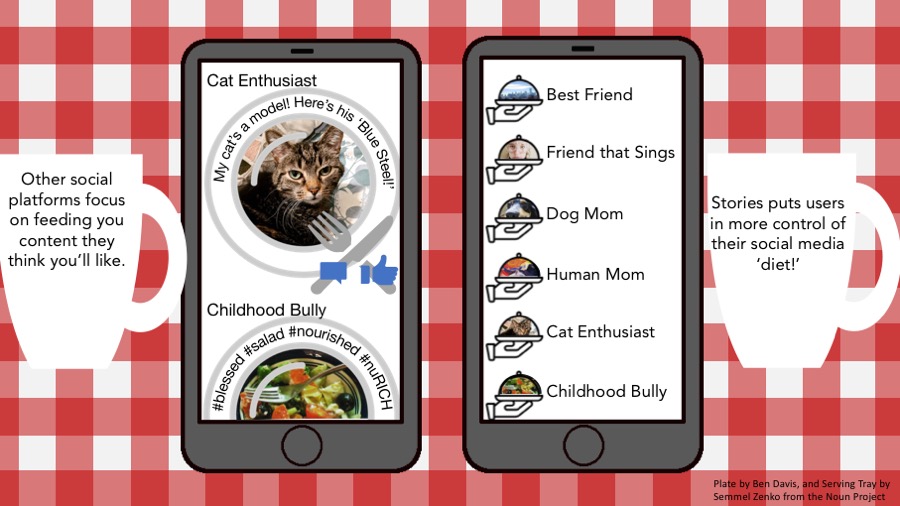While most social media focus on feeds of content from your friends, Snapchat Stories let you control more of what’s “fed” to you. With powerful algorithms figuring out what you like and auto-play videos catching your attention as you scroll, it’s hard to imagine the appeal of Stories’ simple list of contacts with temporary videos or slideshow updates. Yet Facebook and Instagram are starting to roll out Story features of their own. What is so compelling about Stories that the stadiums are adding private studios?
My paper, Share First, Save Later, explores why humans are drawn to this type of interaction. We rounded up a “school” of Snappers (i.e. Snapchat enthusiasts, also a kind of fish, or turtle, whatever) and screenshotted their Snaps for two weeks. Don’t worry — these were only the snaps they were sharing with all their friends. At the end, we had in-depth interviews to really get into their big picture perspectives on little picture sharing.
The Internet has some worrisome things to say about Snapchat. “It’s bad communication.” “It’s ruining learning and relationships!” “Even the company is doomed!” But my interviews revealed that Snapchat Stories turns social media on its head in a way that feels freeing and encouraging for both creators and viewers.
Snappers talked about how Snapchat makes sharing a fun, spontaneous way to connect with their friends. It means a lot to them to be able to share what they enjoy without worrying about a perfectly composed profile. Snapchat Stories create a surprising balance for Snappers by making it easier to share more and watch less. But how does this balance come together?

For creators, Story features encourage experimentation and keep the overhead for sharing low. Snappers can take quick snaps when inspiration strikes, and enjoy the experience of first sharing what’s interesting to them. Since nothing sticks around on a profile, there’s less pressure to be perfect. Then, they can decide to save later, if they’re feeling it.
For viewers, Snapchat is a sorely needed response to the deluge of content on the Internet. On Facebook or Instagram feeds, a video starts playing as you scroll past it, because the algorithm thinks you’ll enjoy that #sunset even if it’s from that person you barely talked to in high school. On Snapchat, it’s easier to focus on who to watch rather than what.
Back in my day, when I wanted to share a picture from a party, I had to take a picture with a camera, get home (traveling through the snow, uphill, both ways), transfer the image to my computer, create an album on Facebook, and then wait for some sweet, sweet likes to roll my way. Snapchat Stories turned that process upside down. Check out my paper to learn more about shifts in sharing.